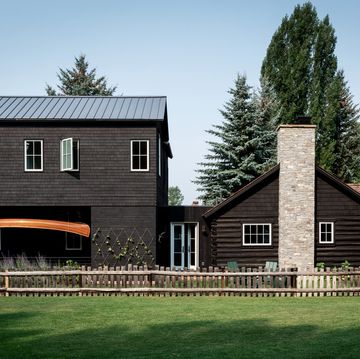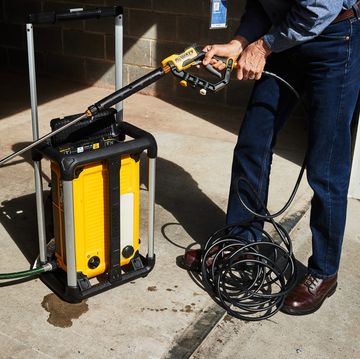Last winter we had snow on the ground that was up to our hips. The drifts on the roof were 5 feet deep. Made me wonder: How much snow is too much for a roof to handle?
I wish there were a simple answer, but none exists. You can look for signs of an overloaded roof, though. I'll explain those in a moment.
But first, to provide perspective, I want to answer the simple question: What is a roof? It's a complex assembly of rafters and related structural members, trusses, the roof deck, and even the roofing material. Whether a roof can sustain a load without damage or collapse depends mainly on the depth and density of the snow, as well as the depth and spacing of the rafters and trusses. Other factors include the surface slope and texture, and the shape and location of the drift.
The ideal pitched roof is smooth and steep (so the snow slides off), and framed with closely spaced rafters (for strength). It also helps if the roof is in a sheltered area; the snow settles on it evenly, rather than being blown into large drifts (which can cause a roof to fail).
So, a risky roof is flat or slightly pitched, and in a location that is exposed to the wind. Shallow roofs adjacent to or below taller, steeper ones are especially vulnerable to a load of snow sliding down from above. For example, low-sloping roofs over porches, carports, and hastily built additions (which also often have undersize rafters) can be vulnerable when the snow flies.
Another hidden danger, according to Jeff Geary, a PM Homeowners Clinic contributor and an architect in Staten Island, N.Y., is a roof assembly from which collar ties have been removed. Located about one-third of the way down from the ridge, the supports connect the rafters and counter the spreading effect created by snow loads. "Many times I go into attics and find that homeowners have removed collar ties to get extra headroom, install a bedroom for the kids, or store holiday decorations," Geary says. "Homeowners should know that collar ties are there for a reason."
You know your roof may need bracing if the rafters are cracked from previous heavy snows or if they've been damaged by fire, termites, or rot. Obviously, you'll need to take a look under the hood, so to speak, to find these conditions. Also, if the roof deck appears rotted, that points to a deeper problem. The roofing should be removed and the deck replaced.
If after a heavy snow you go into the attic and see that the rafters are severely bent by the weight of the snow above or if you hear cracking and popping, that's reason to be concerned. Another bad sign: The house's frame has moved enough to jam shut a door at the front or the back of the house. In this case consult a structural engineer about strengthening the roof assembly.
Regardless of your roof's condition, remove drifts using a roof rake with an extension pole, or hire a pro for the job. Take care not to damage flashing or shingles; the goal isn't to clear every flake, but rather to ease the load.
How a Roof Withstands Snow Loads
Fortunately, the vast majority of roofs don't cave in, even when the weight of the snow on them exceeds what they're designed to carry. Three primary factors help each rafter stand up to the load: A large moment of inertia, a small tributary area, and a brief duration.
RAFTER DEPTH AND MOI
Building codes specify that rafters withstand a snow load expressed in pounds per square foot (psf). The higher the psf snow-load requirement, the deeper the rafter must be (or the more closely spaced to its neighbors). A measure of a rafter's bending resistance is its moment of inertia, or its inertial resistance to movement in the form of bending. The typical rafter's MOI is more than enough to handle snow loads.
TRIBUTARY AREA
The roof deck collects the snow load and transfers the weight to the rafters. For any rafter, the portion of the roof deck that transfers this load is the tributary area. It extends outward in both directions from the center of the rafter's thickness midway to the next rafter. Because rafters are typically spaced 16 inches on center, this amounts to 8 inches (in both directions) from the rafter's center line. The smaller the area, the lighter the load each rafter carries.
DURATION
For most roofs, the duration of a snow load is brief. If the roof had to carry a weight equivalent to a snow load all year without weakening, it would have to be much more robustly built. Within a few days of falling, most of the snow slides off, melts, or undergoes sublimation, the process by which it is transformed from ice crystals directly into vapor.

Roy Berendsohn has worked for more than 25 years at Popular Mechanics, where he has written on carpentry, masonry, painting, plumbing, electrical, woodworking, blacksmithing, welding, lawn care, chainsaw use, and outdoor power equipment. When he’s not working on his own house, he volunteers with Sovereign Grace Church doing home repair for families in rural, suburban and urban locations throughout central and southern New Jersey.















